The evolution of employee time tracking from 1772 BC to today
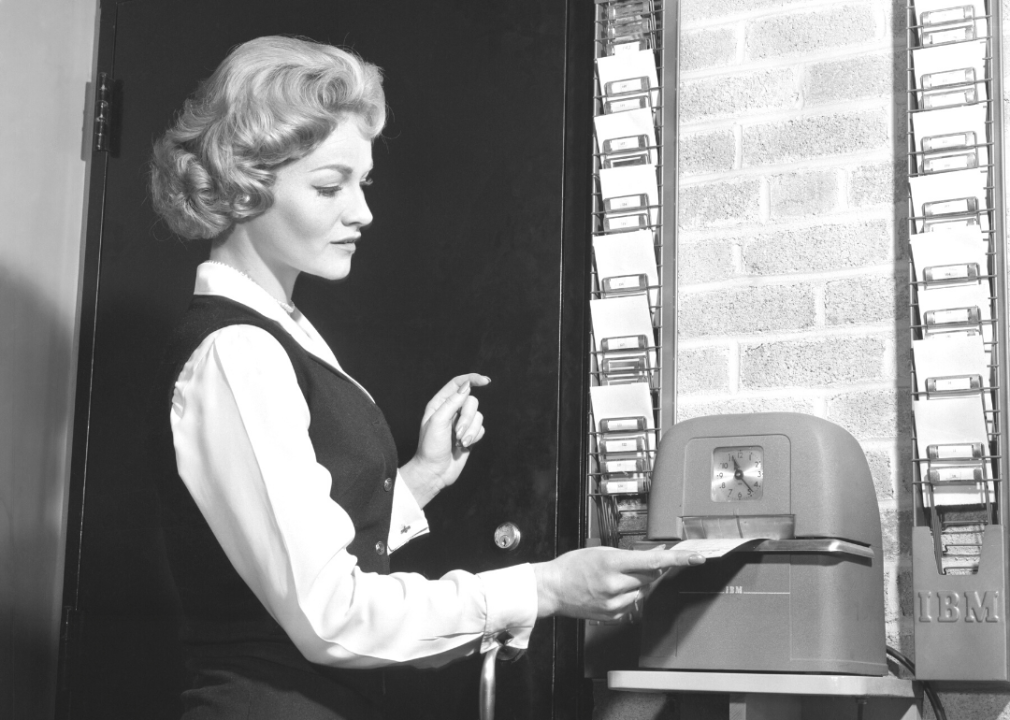
Debrocke/ClassicStock // Getty Images
The evolution of employee time tracking from 1772 BC to today
As the age-old adage states: Time is money. That saying is never more true than when thinking about employees and the companies that pay them for their time, effort, and skill. Buddy Punch compiled a list of notable milestones in employee time-tracking history by researching numerous sources, including Google’s patents database, historical newspaper reports, and more.
Employee time tracking, or the system of logging time spent on the job for the purposes of payroll, is so embedded into modern culture that TV shows from “Laverne and Shirley” to the furry folks in “Looney Tunes” have regularly clocked in at the beginning of a fictional workday, and many employed folks in the real world do the same. According to 2020 research by the Bureau of Labor and Statistics, 55% of all wage and salary workers are paid hourly. The history of employee time tracking is a long one, having existed in some form for at least 130 years. The organization of pay structure has existed for millennia, pre-dating time tracking.
In the late 19th century, employees in the U.S. worked an average of 100 hours per week—when taking out eight hours a day for sleeping, workers had 12 hours a week of time off the clock. Activism in form of strikes and protests influenced changes in labor law and brought about a much more manageable 40 hours a week. Since then, the technology that tracks time spent working has evolved, much like the employees they keep track of, from punch cards and timesheets to the latest in mobile and online time tracking technology today.
![]()
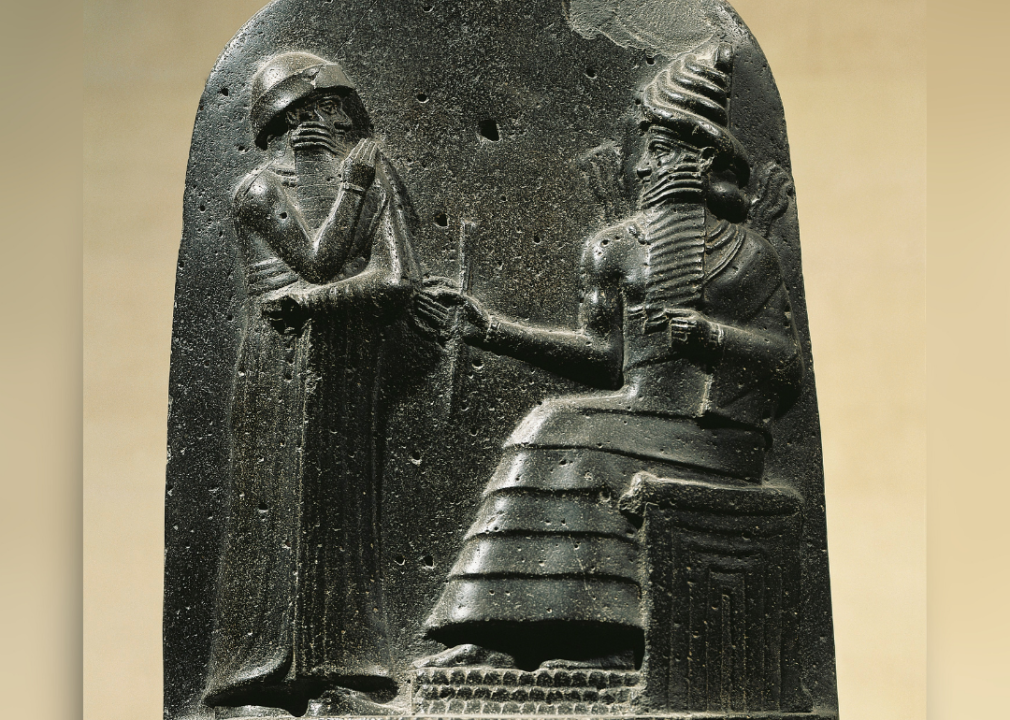
DeAgostini // Getty Images
1772 BC: The Code of Hammurabi
Nearly 37 centuries ago, Hammurabi, the sixth king of the First Babylonian Empire, is credited with enacting the first written set of laws in recorded history. The ruler, who governed from 1792 B.C. until 1750 B.C., was known as a pioneering leader and prolific builder. Through the Code of Hammurabi, he elicited control over the economy and the behavior of the citizens living in his empire.
Established in that set of laws is the first mention of minimum wage, stating the lowest pay employers could grant those under their employ. With wages ranging from silver to corn or grain depending on the job, employers of potters, tailors, carpenters, and other workmen were required to compensate for labor.
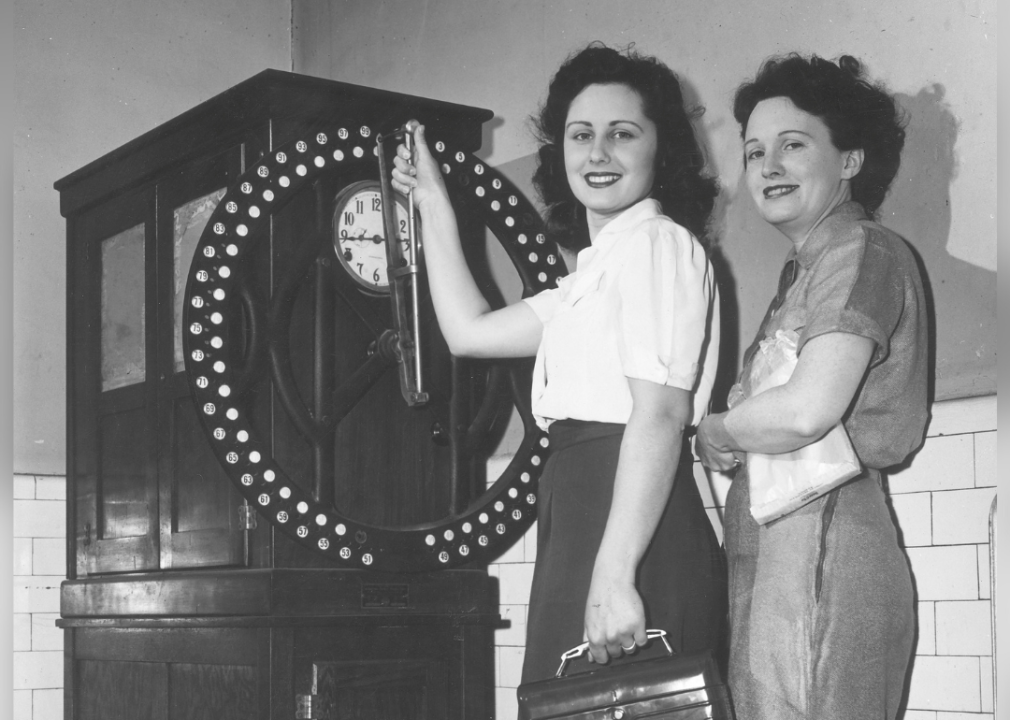
Harold M. Lambert/Lambert // Getty Images
1888: The first time clocks are built
Jumping forward to the Victorian era, innovation reached an all-time high. Superstar inventors like Nikola Tesla and Alexander Graham Bell—with his team of inventors of color such as Lewis Latimer—created devices from the electric light to the telephone. In the advancing world of the everyday worker, the very first patent for a time clock in the United States was created by William LeGrand Bundy, a New York inventor of mechanical devices, including cash registers and gear-based clocks.
In 1888, the patent for Bundy’s most well-known invention, a “time recorder,” was granted by the U.S. Patent Office and Trademark Office. That same year in the United Kingdom, the “dial recorder” was invented by Alexander Dey, and the devices became individual successes for both men, an ocean apart.
The mechanical timepieces, though different in design, both performed the same function: recording when employees clocked in and out of work by creating a time-coded stamp or print.
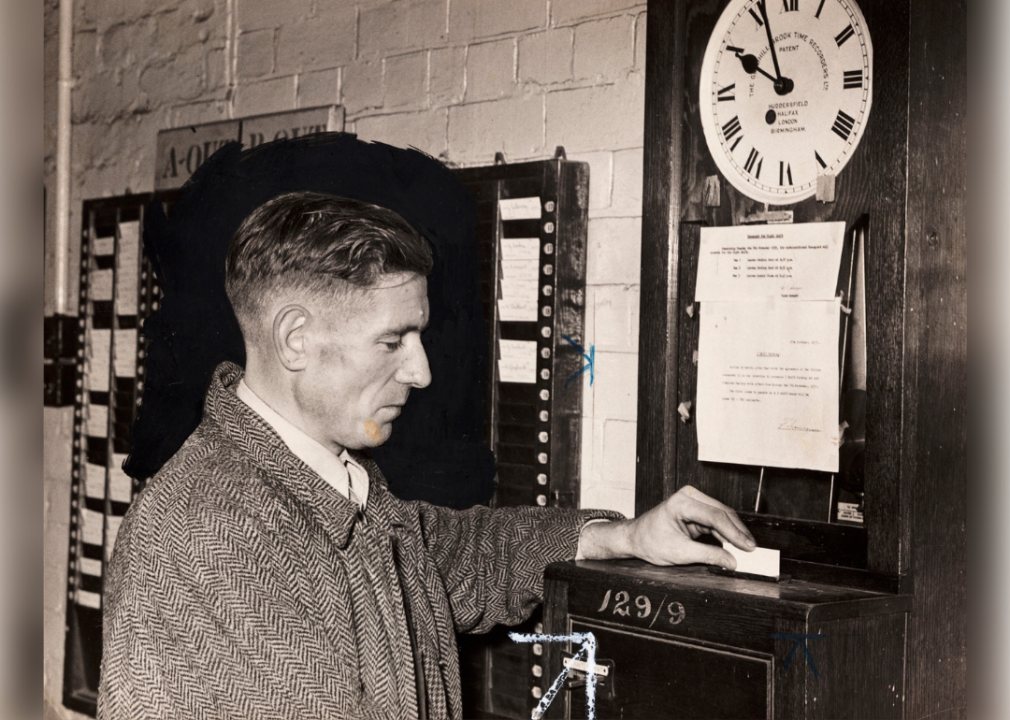
Daily Herald Archive/SSPL // Getty Images
1894: The first time clock is patented
In October of 1894, the first punch card machine was created by Rochester, New York, inventor Daniel M. Cooper. The machine, dubbed a “workman’s time recorder,” used a punch card, differentiating it from previous time recorders. By sliding the card into the machine, employees would receive a time-coded hole punched in their cards as they started their shifts.
This machine proved useful for shift workers in bustling economies of the time. Factory workers, hospital staff, and other shift workers benefited from the fast-paced workflow typical of the Industrial Revolution. Cooper later sold his patent to a man who founded a Rochester brand to house his invention. That company almost a century later would become part of IBM.
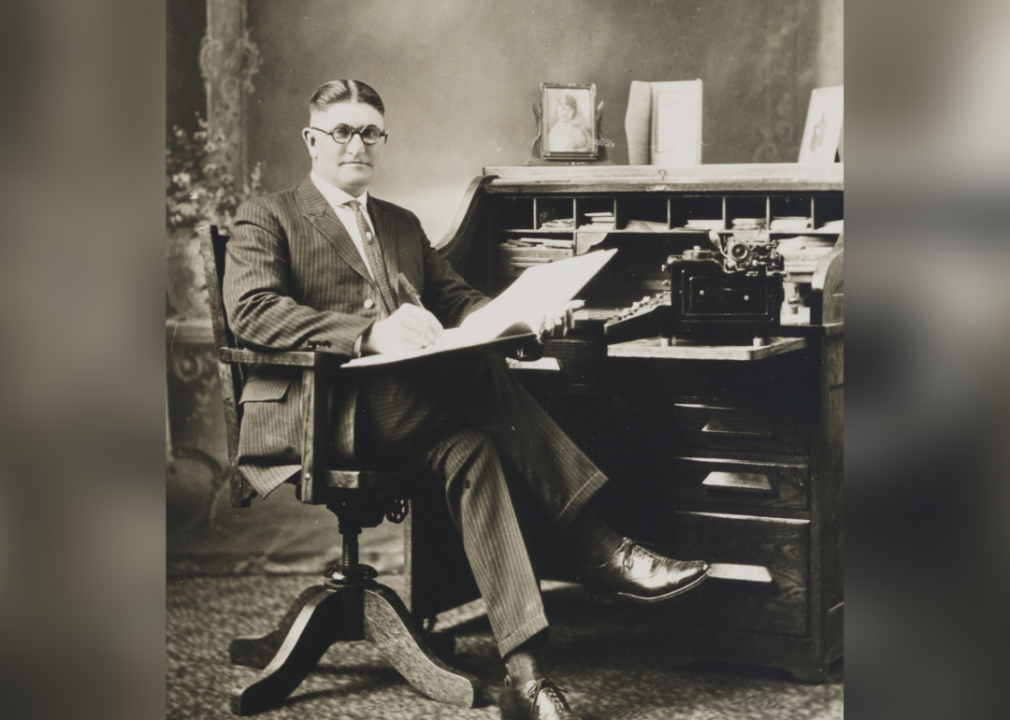
Matthew Witt/Wisconsin Historical Society // Getty Images
1913: A lawyer translates timesheets into ‘billable hours’
Another inventor, Reginald Heber Smith, was not a career inventor in the traditional sense—he was a lawyer. Smith, a lawyer and later managing partner of law firm Hale and Dorr, sought to give his firm a sense of organization.
Using the concept of scientific business management, Smith devised several organizational tactics for improving his firm’s output, including tracking lawyers’ hours by using timesheets. Most lawyers received payment by case, not by hours worked. Smith noted charging clients by cases “close[d] the doors of the courts to the poor,” making legal treatment less accessible to all income brackets.
Arguably his most enduring organizational strategy success, Smith instructed his firm’s lawyers to charge clients specifically for the time they spent working on their cases, which came to be known as billable hours. Since Smith created this time-keeping concept, its use spread to other law firms and is a technique still used by lawyers, but also independent contractors, freelancers, and more.
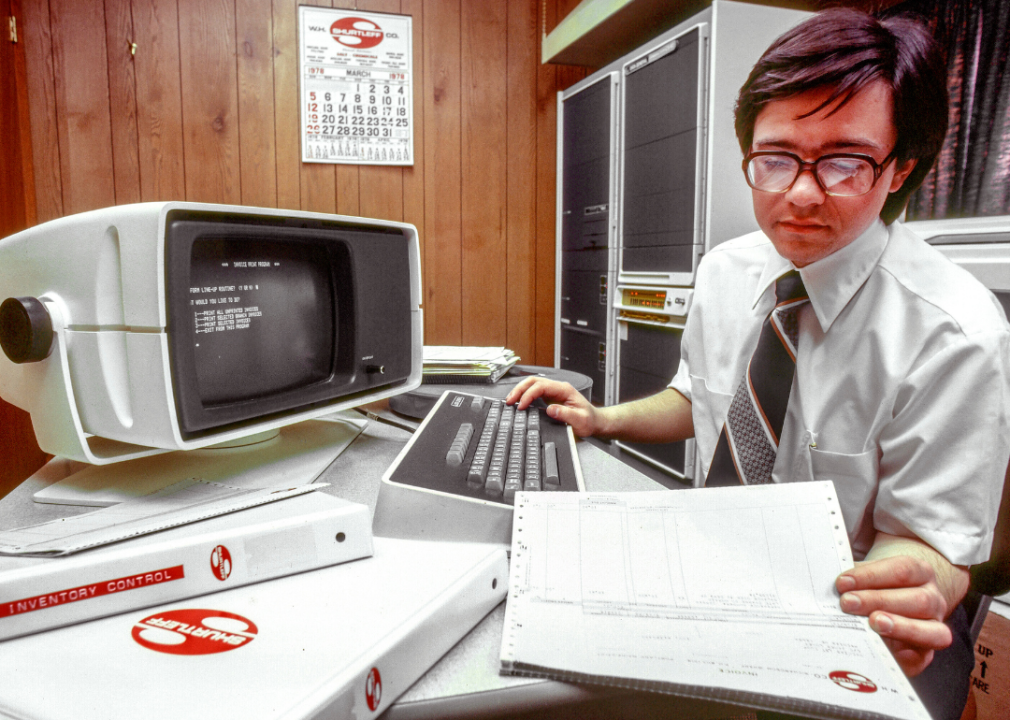
Spencer Grant // Getty Images
1978: Spreadsheets are born
Although creators in the late ’70s are to thank for cultural mainstays like “Space Invaders” the video game, the very first “Star Wars” movie, and the Apple computer, behind the cultural scenes, a new invention brewed. One particular program has made countless lives easier to manage. In 1979, Dan Bricklin and Bob Frankston designed the very first spreadsheet program called VisiCalc—short for “visible calculator”—for the Apple II computer.
Immediately a massive hit, the program showed small businesses and consumers the true potential of using a computer. The early application reduced bookkeeping tasks that took hours by hand to only a few minutes of data entry to complete. Tracking working hours in spreadsheets as opposed to on paper eased payroll calculations. In the following decade, competitor Microsoft launched Excel, which quickly became popular as well.
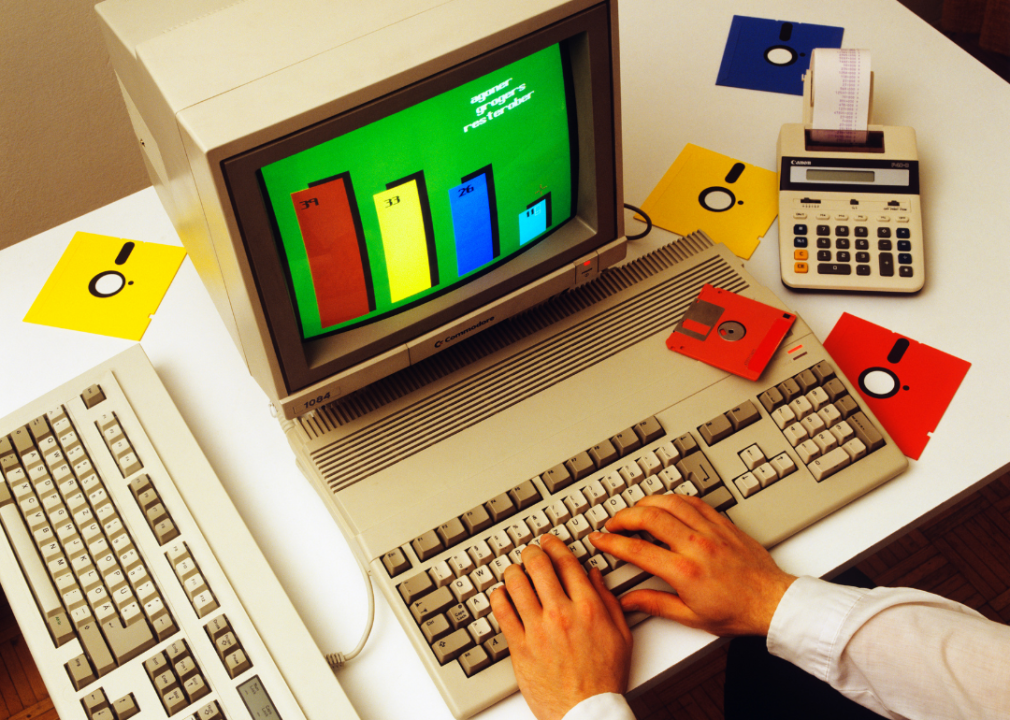
Camerique/ClassicStock // Getty Images
1970-80s: Companies adopt electronic time clocks
Timekeeping machines of the past, particularly those using punch cards, only performed a singular function of recording time. While this worked for assembly-line workers who were paid the same wage for similar positions, as pay structures evolved and companies became more complex, employers needed a more accurate system. This is exactly where innovation thrived: in the time clock industry of the ’70s and ’80s.
Innovators in the field created their own versions of modern timekeeping machines that eliminated the need for punch cards. These new machines instead simplified things by collecting data via an electronic time card, much like the ones modern hotels use. In addition to recording an employee’s time, many of these machines could also transfer that data directly to a payroll computer, track overtime, and even record how much of a worker’s pay was withheld for taxes.
Producers like Simplex Time Recorder, Cincinnati Time Equipment, and Kronos released time clocks that were quickly scooped up by small business owners and larger clients. These clients included Marriott Hotels, Filene’s Basement, and Montgomery Ward, driving the technology’s widespread use.

Jeff Overs/BBC News & Current Affairs via Getty Images
1980-90s: Growth of desktop software
With the advent of electronics like pagers, cell phones, and home computers, work became more fast-paced and accessible than ever. In the ’80s and ’90s, PCs enabled companies to track time more easily through workers who were offsite, traveling, or telecommuting.
Companies like Kronos and Simplex Time Recorder that focused mainly on physical machines pivoted to software instead. The competition between these and other companies meant advances came quickly, and they encouraged frequent cutting-edge updates in time-tracking technology.

Pheelings media // Shutterstock
1990s-today: The rise of mobile tracking
These days, the ability to fuel productivity in the most modern way goes hand-in-hand with using the internet. Almost a third of the world’s 6.8 billion humans use the World Wide Web regularly, with an even higher saturation in the states alone.
The advent of the internet has led to mobile time tracking through a variety of third-party apps and websites. For instance, employees can now log into an account when beginning the workday, and employers have the ability to monitor hours worked. Software often enables bookkeepers to export recorded timesheets to spreadsheets—building on technological advancements from the ’70s.
With the boom of remote work as a result of the COVID-19 pandemic, being able to remotely track hours became a necessity for many businesses. The internet made time tracking more accessible from any location, enabling organizations to operate from any corner of the globe.
This story originally appeared on Buddy Punch
and was produced and distributed in partnership with Stacker Studio.
